London Fashion Week SS26 – Beyond the Catwalk

23-09-2025
London Fashion Week returned from 18th to 22nd September 2025 with a marked shift in tempo, tone, and territory. Under the new leadership of British Fashion Council CEO Laura Weir, the Spring/Summer 2026 schedule embodied a city and an industry in motion. With an 18% increase in on-schedule designers, a bolstered physical presence, and a renewed emphasis on inclusion, this season felt less like a revival and more like a recalibration. London wasn’t simply showcasing fashion; it was rewriting how the city hosts it.

(LFW 180 The Strand, image by JoJo Iles)
At the heart of this renewed energy is Weir’s “designer-first” ethos, an agenda that is both philosophical and practical. From waving some participation fees for emerging designers to reimagining the event as a city-wide cultural moment, her debut season is already drawing attention for its breadth. Storefronts became stages, in-store events drew in curious passersby, and fashion shows spilled into the streets.
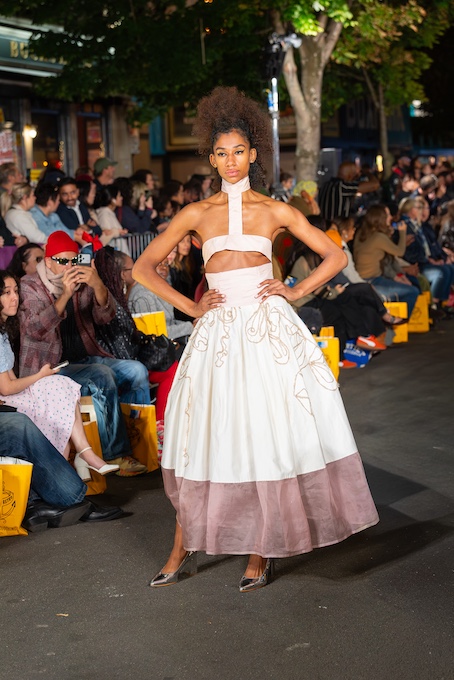
(Tammam presented on the street at Camden as a Catwalk, image by Federico Perale)
Equally important is the infrastructure behind this moment. Longstanding incubator programmes like NEWGEN, Fashion East, ON|OFF and Fashion Scout are not only still relevant – they’re essential. These platforms are helping to bridge the gap between experimental creativity and commercial viability, offering crucial visibility to emerging designers at a time when the path to longevity remains precarious. From Genaro Rivas’ deeply symbolic textile narratives to Fashion East’s anarchic new wave, London SS/26 proves that the future of British fashion lies in its ability to balance long-established heritage with disruption.
LFW Highlights that embodied the new balance between heritage, craft, experimentation, and inclusivity…

(Genaro Rivas by @tamifemi)
Genaro Rivas, the Peruvian designer based in London, presented A Golden Shroud” at 30 Knightsbridge. Inspired by Andean Baroque and two Cusco murals of the 19th century: “The Triumph of Death” and “The Hell”, painted by Tadeo Escalante in the church of San John the Baptist of Huaro, combined with his innate sustainable practices; textile reuse, digital prints and fabric manipulation. A Golden Shroud utilised a dark colour palette, cut away midriffs and vibrant storytelling through digital prints and cutout overlays.
Fashion East, the non-profit incubator founded by Lulu Kennedy, celebrated its 25th anniversary with the SS26 showcase, Us Lot: 25 Years of Fashion East, powered by Nike. This season two new names were added to the Fashion East fraternity: Jacek Gleba suitably presented through dance and movement, while Louis Mayhew favoured found materials, deconstruction and paint splashes referencing mudlarking, painters overalls and 90s grunge vibes. Sandwiched between the two, contrast was provided by Nuba, by Cameron Williams, two seasons in – Nuba twinned a monochrome palette with slick, draped silhouettes fused with British and African influences.
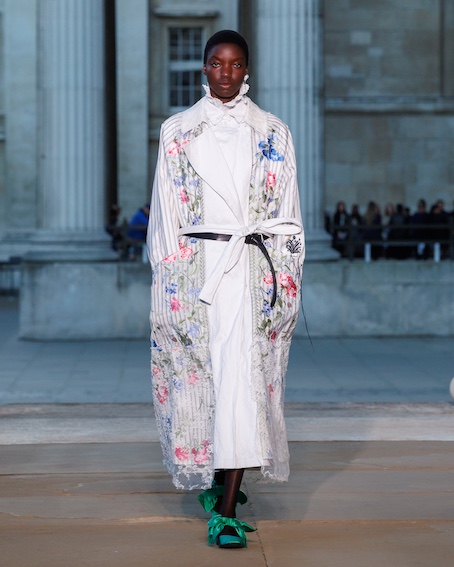
(Erdem SS26)
Established names: Erdem, Roksanda and Simone Rocha, continued with a SS26 update on their signature aesthetics – that combines unique handcrafted details and embellishments, alongside silhouettes full of romance and drama.
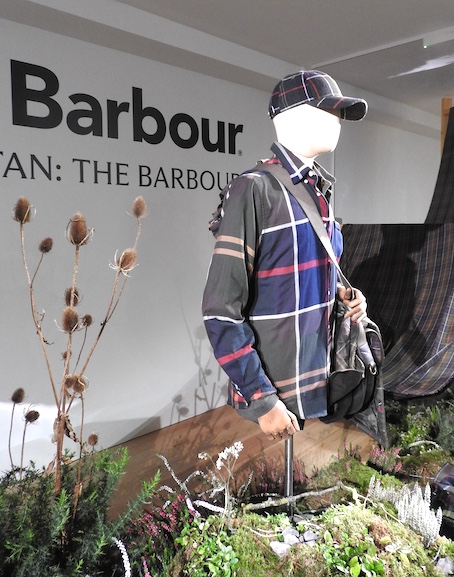

(Tartan: The Barbour Way, images by JoJo Iles)
While London is often cited as a city for new ideas, boundary-pushing and creativity, there is also an established base of heritage brands, tailoring and traditional craftsmanship that deserves recognition.
This season Tartan: The Barbour Way brought the Scottish Highlands to Carnaby Street with an exhibition / bar space complete with weaving loom in action, historical timeline and garments on display. Barbour now has a huge following, particularly with overseas clients, and has successfully retained its core aesthetic with contemporary tweaks.
Over at Savile Row the focus was on new talent coming into the tailoring fold with: The 50‑year anniversary of the Golden Shears awards. This exhibition of work spanned from The London Academy of Bespoke (The LAB), 19 Savile Row to numerous storefront windows along the famous Savile Row.
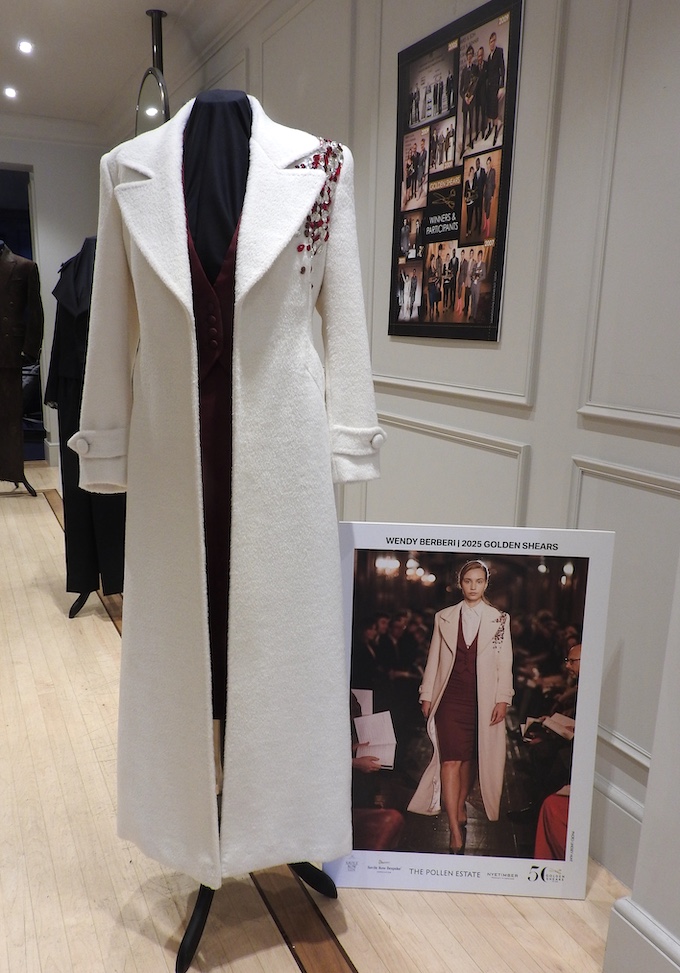
(Savile Row: The 50 Year Anniversary of the Golden Shears Awards, image by JoJo Iles)
Another heritage name that pulls in the crowds – Burberry, rounded off London Fashion Week with its famous trench and check reworked into a swinging 60’s inspired collection.
Trends Emerging for SS/26
Dark Romanticism – Embroideries, appliqués, heavy embellishment with contrast — not sweet, but with a dark twist.
New Tailoring and Structural Drama – Noticeable return of more defined structure: sharper shoulders, more waist definition, cut-outs, A-line shapes, contrast between fluid and rigid.
Heritage Textiles + Craft + Sustainability – Use of traditional fibres, hand‑work, artisanal techniques; zero‑waste / sustainable practices, material mixing, recycling, reclaimed fabrics, found materials.
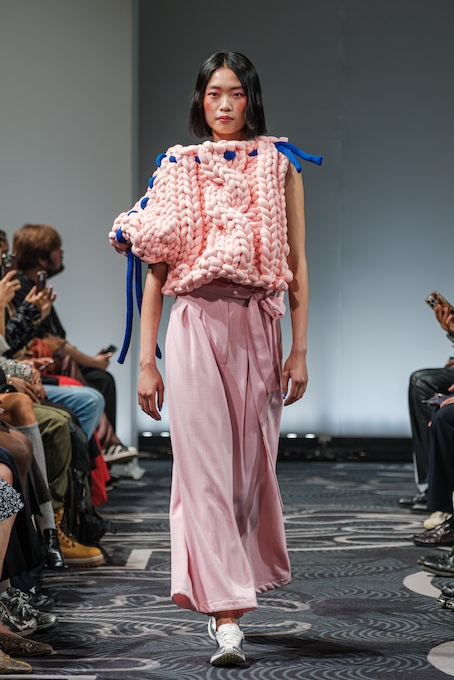
(Pastel pink at ApuJan by Chris Daw)
Colour Chords: Jewel + Pastel + Primary Accents – Palettes are more complex: deeper tones (indigo, plum, charcoal, black) paired with sharp colour hits (oranges, reds, lime neons, silver) or soft pastels (mint, baby pink, powder blue).
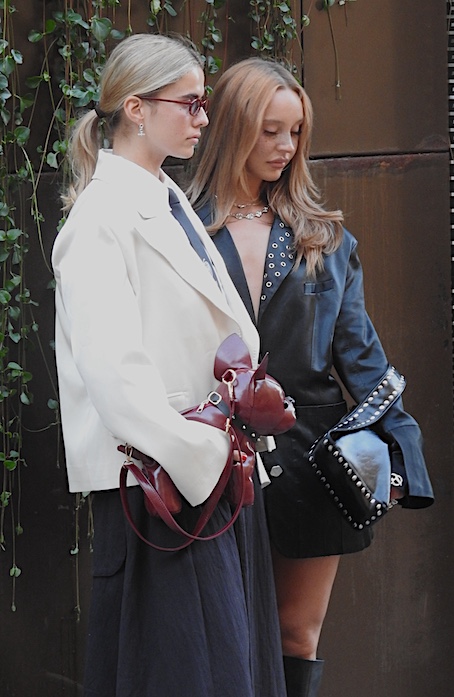
(LFW streetstyle by JoJo Iles)
Streetstyle’s Continued Dialogue with High Fashion – Oversized coats, embellished outerwear, accessories used as statements (clutch bags, ties, hardware, belts), layering. Slip skirts, touches of lace with corset tops, sharp jackets, sporty elements paired with ornate details, boots or unconventional shoes. Remixing the catwalk with vintage and hight street.
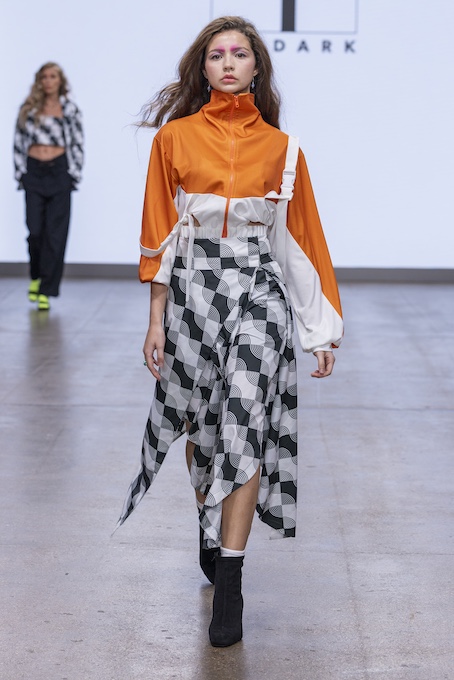
Volume, Sleeves, Collars – Big sleeves, dramatic collars: ruffles, puff sleeves, peter-pan or stand collars; statement necklines have become silhouette focal points.
London Fashion Week September SS26 marked a shift in tone and tempo, with Laura Weir’s first season at the helm of the British Fashion Council showing real signs of renewal. One of the clearest indicators of progress was the tangible increase in on-schedule shows, a measurable win. There was a marked expansion in the number of designers physically presenting, bringing a more diverse chorus of voices into the spotlight. Heritage brands stood alongside boundary-pushing newcomers, creating a compelling blend of tradition and experimentation that underscores the BFC’s evolving promise. This ethos was also reflected in the streets, where the boundary between the public and the professional, between couture and the high street, continues to blur, pointing toward a more inclusive and culturally engaged London Fashion Week.























